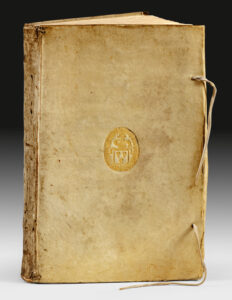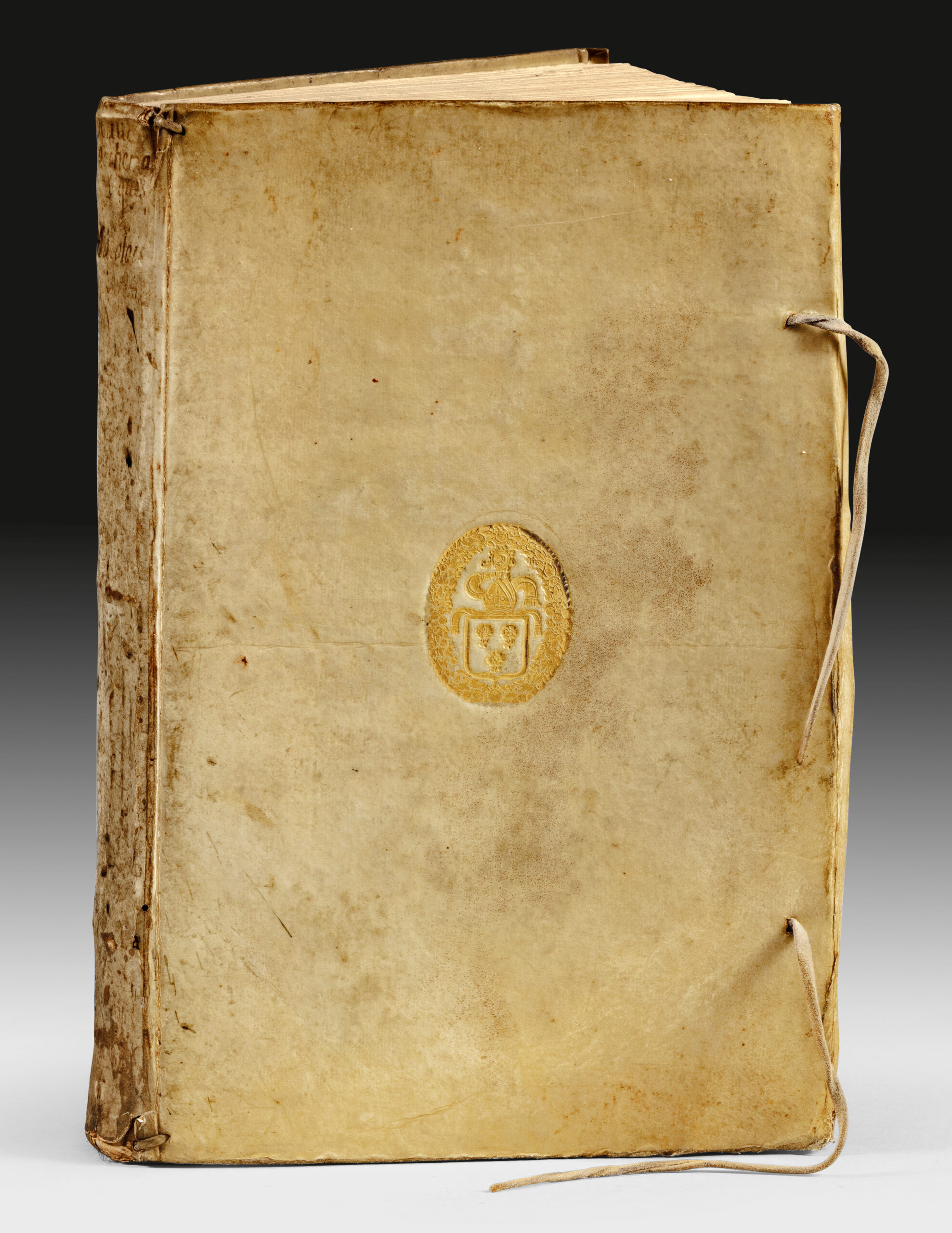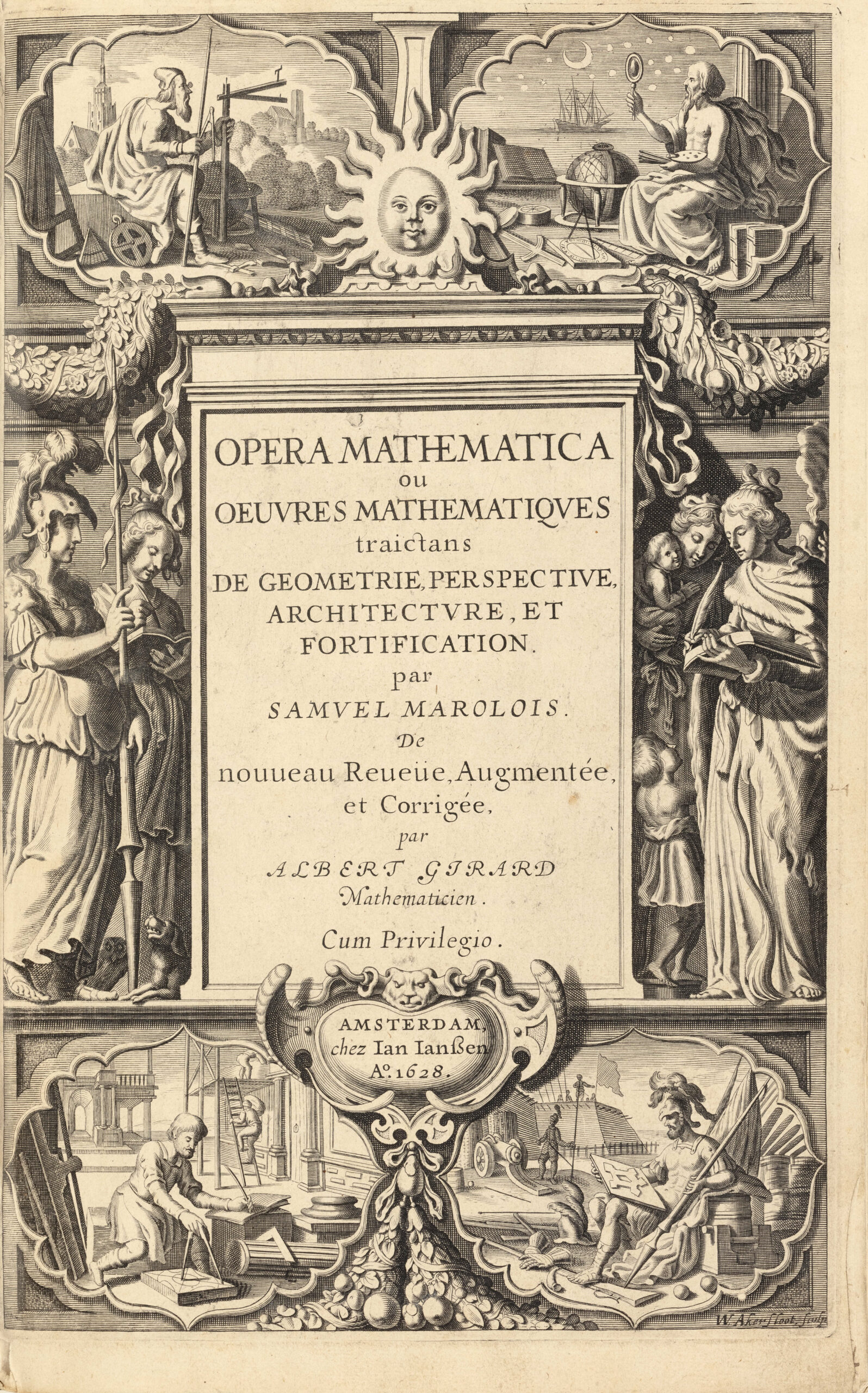Amsterdam chez Jan Janssen, 1628.
Folio of 1 title in an allegorical frame copper-engraved and 42 pages.
– Followed by : Marolois, Samuel. Fortification ou architecture militaire, tant offensive que deffensive ; supputée et dessinée par Samuel Marolois. Revueu, augmentée et corrigée par Albert Girard. Mathématicien.
Amsterdam, chez Jan Janssen, 1638.
(2) ll., 46 pages, 1 chart and 42 plates on double-page.
– Followed by : Marolois, Samuel. Géométrie, contenant la théorie et pratique d’icelle, nécessaire à la fortification. Jadis escrite par Samuel Marolois Mais depuis corrigée et la plupart du Discours changé et rédigé en meilleur état par Albert Girard Mathématicien.
Amsterdam, chez Jan Janssen, 1638.
1 title in an allegorical copper engraved frame, 53 pp, (1) p. of errata, 47 plates on double-page.
Set of 3 works in 1 folio volume [300 x 189 mm], full ivory overlapping vellum, gilt coat of arms stamped in the center of the covers, flat spine, ties. Contemporary binding with arms.
Interesting first collective edition of the works of mathematics and architecture of Samuel Marolois illustrated with 89 double-page plates of architecture and mathematics.
Samuel Marolois, born in 1572 in the United Provinces, died in The Hague before 1627, was a Dutch mathematician and military engineer.
He designed heptagon-shaped fortifications for the city of Coeverden (Netherlands) and was one of the first to write works on systems for attacking or defending a siege.
Contemporary of Antoine de Ville, he took over the perspective works of Hans Vredeman de Vries, which he published after his death. He fortified Coevorden (Drenthe), creating a heptagon and, on this occasion, he is considered the creator of the “Dutch layout” or false braye (a term used by Rabelais as early as 1546).
In 1627, the Opera mathematica was revised by the brilliant mathematician Albert Girard (1595-1632), a French Protestant refugee in the Netherlands, who also translated Stevin into French and who was probably the first to use the abbreviation Sin E to designate the sine of an angle, in this case Géométrie. His revisions were retained in all later editions, printed in italics and thus easily recognizable as post-writing interventions.
Further revisions were added in 1628 by Theodor Verbeeck in Géométrie and Frans van Schooten in Fortification.
“Marolois” wrote mathematical works, geometry and perspective, which aim to show architects how to form, for example, a square in a triangle, how to calculate the lines of a hexagon. These are primarily military works, intended to build fortifications. Some of these works, including “Fortification ou architecture militaire,” (1615) were reviewed by Albert Girard.
Precious scientific volume bound in contemporary vellum with the arms of Antoine de Roore, born in Courtois, elected abbot of the Abbey of St. Martin of Tournai on December 9, 1622. In 1654, Pierre Cazier became his coadjutor. He died on December 20, 1655.
See less information


